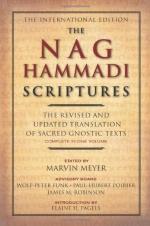|
This section contains 3,535 words (approx. 12 pages at 300 words per page) |

|
NAG HAMMADI. Unearthed in 1945 by a group of Egyptians digging for fertilizer, the so-called Nag Hammadi codices were one of the most important manuscript discoveries of the twentieth century for the study of religion in the late ancient Mediterranean world, particularly formative Christianity and Judaism. The forty-six different tractates that the codices contain have provided scholars with a wealth of new data for understanding the development of early Christian traditions about Jesus; Gnostic, Valentinian, and other streams of Christian thought later considered to be heretical; and Coptic grammar, orthography, and codicology. For the most part, however, these sources have not resulted in settled opinions or certain knowledge, but in sharpened debate and new avenues of investigation. Many questions about the codices and their contents remain unanswered.
The Discovery and Publication of the Codices
A group of Egyptian peasants discovered a jar containing the codices in December...
|
This section contains 3,535 words (approx. 12 pages at 300 words per page) |

|


